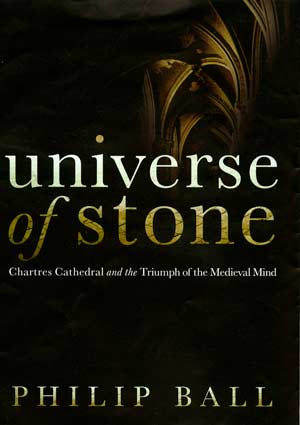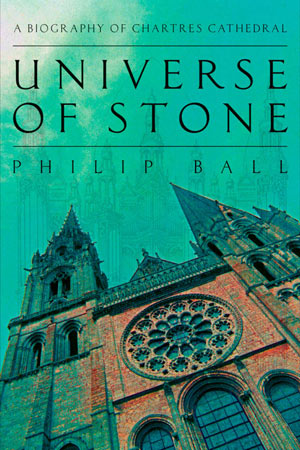 Universe of Stone: Chartres Cathedral and the Triumph of the Medieval Mind by Philip Ball
Universe of Stone: Chartres Cathedral and the Triumph of the Medieval Mind by Philip Ball
In the twelfth century, Christians in Europe began to build a completely new kind of church – not the squat, gloomy buildings we now call Romanesque, but soaring, spacious monuments flooded with light from immense windows. These were the first Gothic churches, and they culminated in the cathedral of Chartres, where all the elements of the new style cohered perfectly for the first time.
BUY ON AMAZON
Since the church was the hub of society, representing nothing less than a vision of heaven on Earth, this shift in architectural style was not undertaken lightly or out of a desire for mere novelty. It marked a profound change in the social, intellectual and theological climate of Western Christendom. And it posed enormous challenges to the master builders and masons who constructed the cathedrals, who had to make these vast masses of stone seem airy and weightless.
In this book I trace the reasons for the inception of the Gothic style. I argue that it signifies a new way of looking at God, the universe, and humankind’s relationship to them. Informed by an influx of texts from the ancient world, philosophers began to question old certainties about God’s power and plan. This was the beginning of the argument between faith and reason – which has never ended. The Gothic era saw the birth of a scientific view of the world, ultimately threatening to dispense with God altogether.
It was at Chartres that much of this new thinking arose, and Universe of Stone focuses on this most glorious and pristine of the great Gothic churches, providing a guidebook while explaining what the stones represent. It will open your eyes to the real messages in the high vaults, the orderly proportions and the famous windows of this much-loved French cathedral.
(Bodley Head/HarperCollins, 2008)
BUY NOW on Amazon UK

Harper Collins Publishers 2008, Hardback First Edition ISBN 0-061-15429-6
